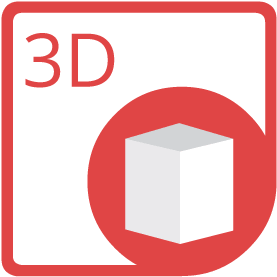
Convert GLB to OBJ via Java
GLB to OBJ conversion using Java library without any 3D modeling software.
How to Convert GLB to OBJ Using Java
In order to render GLB to OBJ, we’ll use
API which is a feature-rich, powerful and easy to use conversion API for Java platform. You can download its latest version directly from
and install it within your Maven-based project by adding the following configurations to the pom.xml.
Repository
<repository>
<id>AsposeJavaAPI</id>
<name>Aspose Java API</name>
<url>https://repository.aspose.com/repo/</url>
</repository>
Dependency
<dependency>
<groupId>com.aspose</groupId>
<artifactId>aspose-3d</artifactId>
<version>version of aspose-3d API</version>
<classifier>jdk17</classifier>
</dependency>
Steps to Convert GLB to OBJ via Java
Java programmers can easily convert GLB file to OBJ in just a few lines of code.
- Load GLB file via the constructor of Scene class
- Call the Scene.save method with OBJ’s format.
- Check resultant OBJ file at specified path
System Requirements
Before running the Java conversion code, make sure that you have the following prerequisites.
- Microsoft Windows or a compatible OS with Java Runtime Environment for JSP/JSF Application and Desktop Applications.
- Get latest version of Aspose.3D for Java directly from Maven.
Java 3D Scene Manipulation Library
Aspose.3D is a CAD and Gameware API to load, modify and convert 3D files. API is a standalone and does not require any any 3D modeling or rendering software. One can easily use API for USD, Discreet3DS, WavefrontOBJ, STL (ASCII, Binary), Universal3D, FBX (ASCII, Binary), Collada, glTF, PLY, GLB, DirectX and more formats.GLB What is GLB File Format?
GLB is the binary file format representation of 3D models saved in the GL Transmission Format (glTF). Information about 3D models such as node hierarchy, cameras, materials, animations and meshes in binary format. This binary format stores the glTF asset (JSON, .bin and images) in a binary blob. It also avoids the issue of increase in file size which happens in case of glTF. GLB file format results in compact file sizes, fast loading, complete 3D scene representation, and extensibility for further development. The format uses model/gltf-binary as MIME type.
Read MoreOBJ What is OBJ File Format?
OBJ files are used by Wavefront’s Advanced Visualizer application to define and store the geometric objects. Backward and forward transmission of geometric data is made possible through OBJ files. Both polygonal geometry like points, lines, texture vertices, faces and free-form geometry (curves and surfaces) are supported by OBJ format. This format does not support animation or information related to light and position of scenes. An OBJ file is usually an end product of the 3D modeling process generated by a CAD (Computer Aided Design). The default order to store vertices is counter-clockwise avoiding explicit declaration of face normals. Though OBJ files declare scale information in a comment line yet no units have been declared for OBJ coordinates.
Read MoreOther Supported Conversions
You can also convert GLB into many other file formats including few listed below.